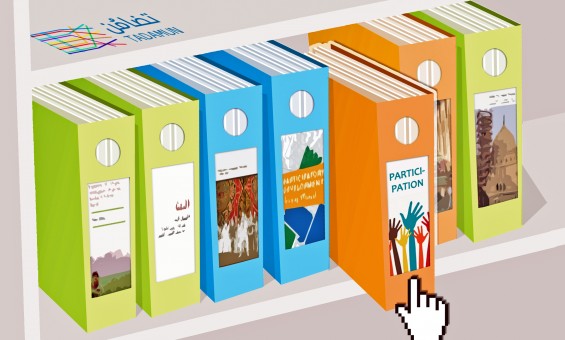
MUST READS | Participation in TADAMUN’s Urban Database
As in the discourse of the new Ministry, “participation” is usually slotted in without elaborating neither what is meant nor how it is to be concretely put into practice. The concept is broad and complex and so it may be interpreted in different ways. For example, in 2009 the General Organization for Physical Planning (GOPP), the entity behind Cairo 2050, had commissioned a consultancy firm to conduct a survey to gauge the extent to which people welcome the plan’s ideas. With its vague results, this survey merely serves as a stamp on an already sealed plan, donning a “participatory” façade.
There are different degrees of participation that inevitably result in varying outcomes but there are also various stakeholders in any decision-making or planning processes who are most likely to have different interests and motives and who would prefer a particular form of participation over another. Therefore, when discussing participation as a solution to urban problems, it is important to be aware that it may manifest itself in various forms and that the conceptualization and methodology applied are important in assessing the extent to which a particular plan or project may be deemed “participatory”.
This article highlights a range of important, publicly accessible 2 resources on the topic of participation, including handbooks and toolkits, available via TADAMUN’s Urban Database.
An Introduction to Participation
The Community Tool Box website provides introductory, accessible information on participatory approaches, their advantages and disadvantages. The International Association for Public Participation (IAP2) has developed a document identifying Core Values of Public Participation. Participation: A Theoretical Context is a document produced by CAG Consultants that reviews and discusses participation in theory. Another document about participatory benefits, challenges, and strategies is Participation in Strategies for Sustainable Development.
According to David Wilcox’s Guide to Effective Participation, the different levels of participation are:
(a) Information
(b) Consultation
(c) Deciding Together
(d) Acting Together
(e) Supporting Independent Community Interests
IAP2 and Good Practice Participate provide different versions of these levels.
There are limited Arabic publications on the topic but this publication by GrantCraft is an excellent resource on participatory action research. Another document from the Arab Forum for Alternatives about community participation through local councils is an informative read. The UN-Habitat’s document on participatory budgeting explains the methodology through answering frequently asked questions on participation.
Projects
Egypt
There have been very few participatory development projects in Egypt. Most are still implemented in a top-down fashion where experts conduct the different stages of the project without consulting the community or non-government stakeholders. However, there are several entities that have opted for the participatory approach instead of the traditional top-down approach, believing it to be a more democratic and sustainable way to carry out a project.
i. In the mid-1990s, the Agha Khan Trust Project began building Al-Azhar Park and then added the restoration of the 12th century Ayyubid wall and several landmark buildings and the revitalization of Darb al-Ahmar district to its agenda. While the neighboring district of Darb al-Ahmar was poor, it featured one of the richest concentrations of Islamic art and architecture in the world (AKTC, 2005, p.2). This project was dealt with as a case study, testing a variety of development and restoration concepts and methodologies. One of its most important insights was that a “top-down approach to development does not work” (AKTC, 2005, p.14):
Development has to be grassroots and grounded in the needs and priorities of the community. Time and again the agencies of the Aga Khan Development Network have seen that the best development ideas come from the residents themselves. The role of an external institution is to help residents identify their own needs and provide some of the means and expertise to create development solutions. Without the consent and the participation of the people affected, development projects are doomed to fail. (AKTC, 2005, p.14)
The revitalization project of Darb al-Ahmar included housing rehabilitation, microfinance, apprenticeships, and healthcare.
ii. Participatory Development Programme in Urban Areas (PDP) is a program initiated following the Egyptian Government’s request that Germany and Egypt work together on developing sustainable solutions for informal area management in Egypt’s growing areas.
The program’s objective was to enhance the living conditions of the poor urban population of Greater Cairo through improving environmental conditions and better service delivery by public administration and civil society organizations. Much of the program’s work was documented through Elena Piffero’s thesis, among other publications. There were two pilot areas where tangible results could be seen: Manshiyyit Nāṣir and Bulaq al-Dakrur. Also, the PDP published a book, Cairo’s Informal Areas, with Chapter 3 dedicated to Participation in Practice.
iii. Athar Lina was a recent (2012) small scale, heritage-led participatory design project, focusing on al-Khalīfa Street – between the nodes of Ibn Tūlūn Mosque and Sayyida Nafīsa Square in the neighborhood of Sayyida Zeinab. The project was a series of workshops, debates and meetings (videos available) discussing the relationship between the monuments and the surrounding neighborhood, the entities responsible for it and those with a vested interest in it or even those inconvenienced by it. Topics discussed included who owns the monument, who protects them, who improves them, and who puts them at risk. The objectives were to provide an environment of communication among the three main stakeholders: residents, government, and civil society. The project produced an Arabic literature review on community participation.
iv. The Better Life Association for Comprehensive Development (BLACD) has worked on numerous participatory development projects outside of Greater Cairo, including the city of al-Minyā. They focus on how to improve the living conditions of poor communities that lack services and train residents about the best ways to express their needs and make changes. They have worked on urban priorities such as improving housing and water and sanitation. BLACD empowers the community in al-Minyā by training local volunteers to manage projects, teaching them skills to help maintain their houses and they also raise awareness about the legal right to housing.
v. The Together Foundation for Development and Environment has launched wastewater and sanitation projects in the Banī Suīf, 100 km south of Cairo. The foundation has built 15 sanitation systems for villages in Upper Egypt, serving 32,700 residents. “Awareness and community engagement” is an integral part of their projects. Local youth are also engaged in the operation and maintenance stage of the process after receiving training (Synergos, n.d.).
vi. Cairo 2050 is a government-led urban development project, which claimed controversially that it used a participatory approach and sought “community participation in formulat[ing] the vision.” Section 4 of this document describes:
* 2 conferences with 300 participants – key officials, thinkers, media figures, investors, members of People People’s Assembly and Shura Council;
* 28 specialized workshops with 1000 participants – experts and executive officials;
* 4 symposiums with 400 participants – experts NGOs and associations;
* 4 surveys with 3000 families in the Greater Cairo Region.A series of surveys does not necessarily transform a project into a participatory one. The research and design/planning of the project still followed a top-down approach.
International
There is an abundance of participatory projects implemented all over the world. We will not show a selection of projects, but we will share searchable pages that display a range of projects selected as examples of best practices.
The IAP2 publishes annual reports showcasing participation in practice with the aim of sharing of experience around the world; their guide is a list of the projects included in the reports. UNESCO shares their selection of best practices in Community Participation and Urban Governance. Logolink’s publication: Citizen participation in challenging contexts highlights participation, local governance, and deepening democracy over the past 10 years in various case studies. Another interesting publication Change by Design focuses on participatory design. DELGOSEA, with work based in Southeast-Asia, also has a number of very helpful reports on best practices of participation-related issues.
There are also various conferences that take place with a focus on the participatory approach. Among these are the Participatory Design Conference, the Participatory Innovation Conference, and the International Conference on Participatory Budgeting.
Participation is also encouraged electronically through the web. Participedia, a website developed by Harvard professor, Archon Fung, has created a common platform for sharing information on political participation. Articles on popular worldwide participatory projects and the organizations that sponsor, implement, and study them are shared as well as articles on participatory methods such as deliberative polling, citizens’ assemblies, and participatory budgeting.
How-to Guides
The following are some interesting participatory tools, handbooks, and toolkits that could be useful for understanding and carrying out the participatory process.
Within the context of Egypt, the PDP has generated a series of in-depth guides on the different tools utilized in the participatory process, some of which are: Knowing Local Communities and Empowerment and Trust Building Through Local Initiatives, available also in Arabic. The different participatory planning tools in urban areas, as identified by the PDP are:
(a) Knowing Local Community
(b) Support of Local Initiatives
(c) Information Sharing
(d) Participatory Planning and Budgeting
(e) Impact Monitoring
Another helpful resource from the PDP is the Participatory Upgrading of Informal Areas: A Decision-Makers’ Guide for Action.
On a global level, there have been numerous handbooks and toolkits published from all over the spectrum of industries that use the participatory approach. Just to name a few, the Participatory Methods Toolkit: A Practitioner’s Manual and the Participatory Learning and Action Toolkit are guides that give general guidelines and tips for participatory methods with descriptions of the different methods and techniques. Participatory Planning and Action: Eight Steps for Facilitators is one that shows how different tools and activities such as mapping can be used. The UNDP’s Participatory Development: Training Manual aimed at trainers and educators is another invaluable resource. The Good Practice Participate website provides an in-depth description of the different techniques designed to encourage public participation in decision-making. For participatory budgeting, Participatory Budgeting in the UK – A Toolkit is an informative UK-based resource.
Critiques of the Participatory Approach
Elena Piffero has a section in her thesis where she reviews the critiques of participatory development (2009, p.40).Participatory approaches, she explains, divert inordinate attention to the local level, assuming that community engagement is sufficient to address a particular issue. In so doing, they do not take into consideration that micro-level inequalities may exist and fail to address the inequality-inducing structures “that operate at the micro-scale but are reproduced beyond it” (quoted in Piffero, 2009, p.41).The Nightmare of Participation (Crossbench Praxis as a Mode of Criticality) is a recently published book, edited by Markus Miessen. The book is a series of essays that discusses the contemporary overuse of the concept of ‘participation’. The following extract is from the book’s introduction:
At the moment, participation is at a point of transition within politics, within the Left, within spatial practices, and within architecture, which is its most visible and clearly defined product. Both historically and in terms of political agency, participation is often read through romantic notions of negotiation, inclusion, and democratic decision-making. However, it is precisely this often-unquestioned mode of inclusion (used by politicians as never-ending campaigns for retail politics) that does not produce significant results, as criticality is challenged by the concept of the majority. Instead, this work promotes a conflictual reading of participation as a mode of practice, one that opposes the brainwave of the democratic facilitator, one that, at times, has to assume non-physical violence and singular decision-making in order to produce frameworks for change. (2010, p.13-4)
This book was preceded by two others on the same topic, named Did Someone Say Participate? and Violence of Participation also by the same author.
Please do share your thoughts with us – is the participatory approach a help or hindrance? Also, feel free to link us to your participatory projects/initiatives!
For more resources on this topic, select Participation from ‘Topics’ or any ‘Keyword’ that includes the words participation or participatory.
Works Cited
Ebrahim, Alnoor. 2005. NGOs and Organizational Change: Discourse, Reporting, and Learning. Cambridge: Cambridge University Press.
1. ONTV. (2014, September 6). Mu’tamar Wazīrat Al-Taṭwir Al-Ḥaḍary w Al-‘Ashwa’iyyat li Ist’irāḍ Al-Khiṭa Al-Mustaqbaliyya w Baḥth Taṭwir 59 Manṭiqa ‘Ahwa’iyya. [The Minister of Urban Development and Informal Settlements’ Conference to present the future plan and the development of 59 informal areas]. [Video]. http://www.youtube.com/watch?v=YhJ5PsH2Ayw
Al-Gohary, S. (2014, September 6). Wizārat [The Ministry of Urban Development and Informal Settlements]. Presentation at the Egyptian Day for Housing Conference organized by the Egyptian Center for Civic and Legislative Reform, Journalists’ Syndicate, Cairo.
2.At this point, TADAMUN only posts documents that are readily available online. TADAMUN does not post publications that are not accessible to the public such as restricted-access journal articles.









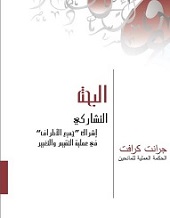
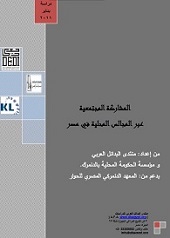
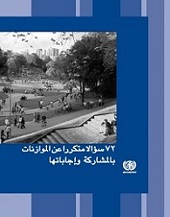










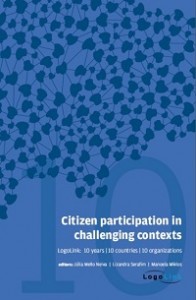
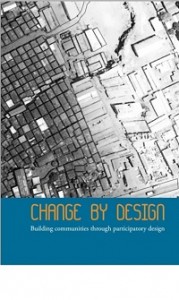







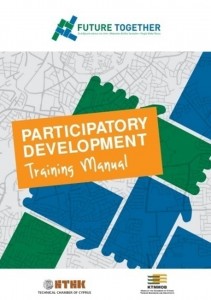
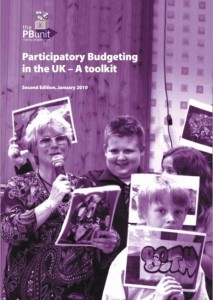
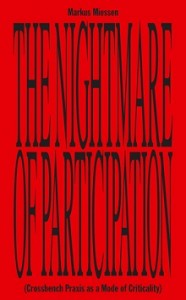

Elena Piffero Says:
Hi there, I am really glad that my work is mentioned on your website! However, to be precise, the “What happened to participation” is not a “documentation” of the GTZ development program, it is a (very) critical assessment.
October 30th, 2014 at 1:16 pmTadamun Team Says:
Dear Ms. Piffero,
Thank you for your comment. The last section in this article titled “Critiques of the Participatory Approach” highlights your valuable work in this regard.
Kind Regards,
November 6th, 2014 at 3:43 pmThe Tadamun Team
Vicky Says:
Talk to the folks who are creating the at UC Santa Cruz. They’re itrocporaning fan/scholar participation in a ton of ways. I think it’s Robin Chandler you’d want to talk to; there’s a terrific presentation on it .
November 14th, 2014 at 11:33 am